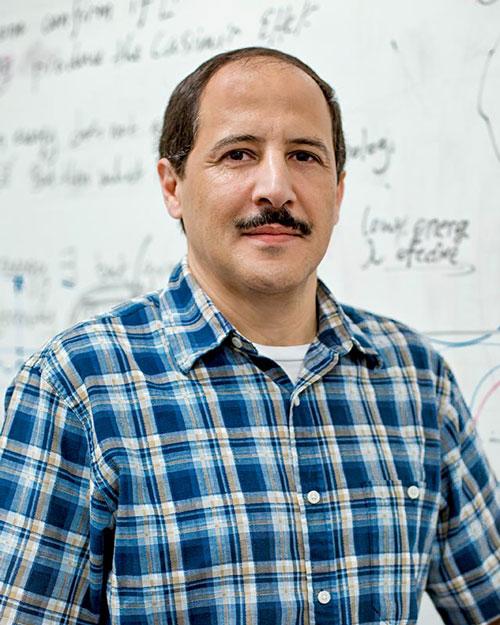At the 2024 Solar Eclipse Panel Discussion that took place April 8, Professor of Physics and Astrophysics Mustapha Ishak-Boushaki retold the story of how a total solar eclipse in Brazil changed the world and brought Albert Einstein to fame, and how UTD added to the story 100 years later.
In 1919, the world accepted Albert Einstein’s work of general theory of relativity forever changed the understandings of modern physics and astronomy, yet the experiment that proved this theory wasn’t his own. It belonged to the mentor of Ishak-Boushaki’s mentor, Arthur Eddington, who proved Einstein’s theory after measuring the gravitational deflection of starlight observed in a total solar eclipse in Sobral, Brazil.
“It’s about the fact that the space-time is curved by the sun,” Ishak-Boushaki said. “If you try to envision this [starlight trajectory], you won’t be able to because the sun is too bright. And here came a bright thought about the plan to use the eclipse to completely cover the sun so you can see the bright stars here and you can measure them. That’s the idea Arthur Eddington came up with.”
In 1911, Einstein proposed that light bends when it passes near an object of great mass — because of gravity — and challenged the scientific community to test his theory. This theory was quickly proven incomplete, as Einstein argued that light would bend at an angle of 0.83 arcseconds. However, when tested by others, Einstein’s math was off and didn’t align with real world results. After a blow to his reputation, Einstein reevaluated his work, leading to a new value of 1.75 arcseconds in a four-part paper of general relativity published in 1915, where he would then again challenge the scientific community to test his theory in the real world.
During World War I, this updated theory reached the interest of astronomer Eddington, a leader in solar eclipse expenditure and research, whose own student would eventually mentor Ishak-Boushaki. Eddington mobilized his resources to venture to a total solar eclipse that came May 29, 1919, when Eddington arrived in Sobral a few months after the war ended. In just a handful of minutes, Eddington saw the measurement align correctly with Einstein’s new prediction, and within the next few months, Eddington successfully argued against the Royal Society and published his findings. It brought Einstein to international prominence, and opened entirely new avenues of understanding gravity, light and space still used today.
Standing where Eddington witnessed Einstein’s theory in action is now the Museum of Eclipse in Sobral, Brazil, where UTD would be invited to take part in history nearly 100 years later. The International Astronomical Union hosted the Centenary of Solar Eclipses of 1919 – Sobral, in 2019, during which Sobral declared and celebrated the Year of Science with some of the world’s greatest astrophysicists and cosmologists for the 100th anniversary of the eclipse.
Invited to lead the celebration as the inaugural speaker representing UTD, Ishak-Boushaki had the honor to open the ceremony with the university’s own findings and presented the latest advancement in the fields.





